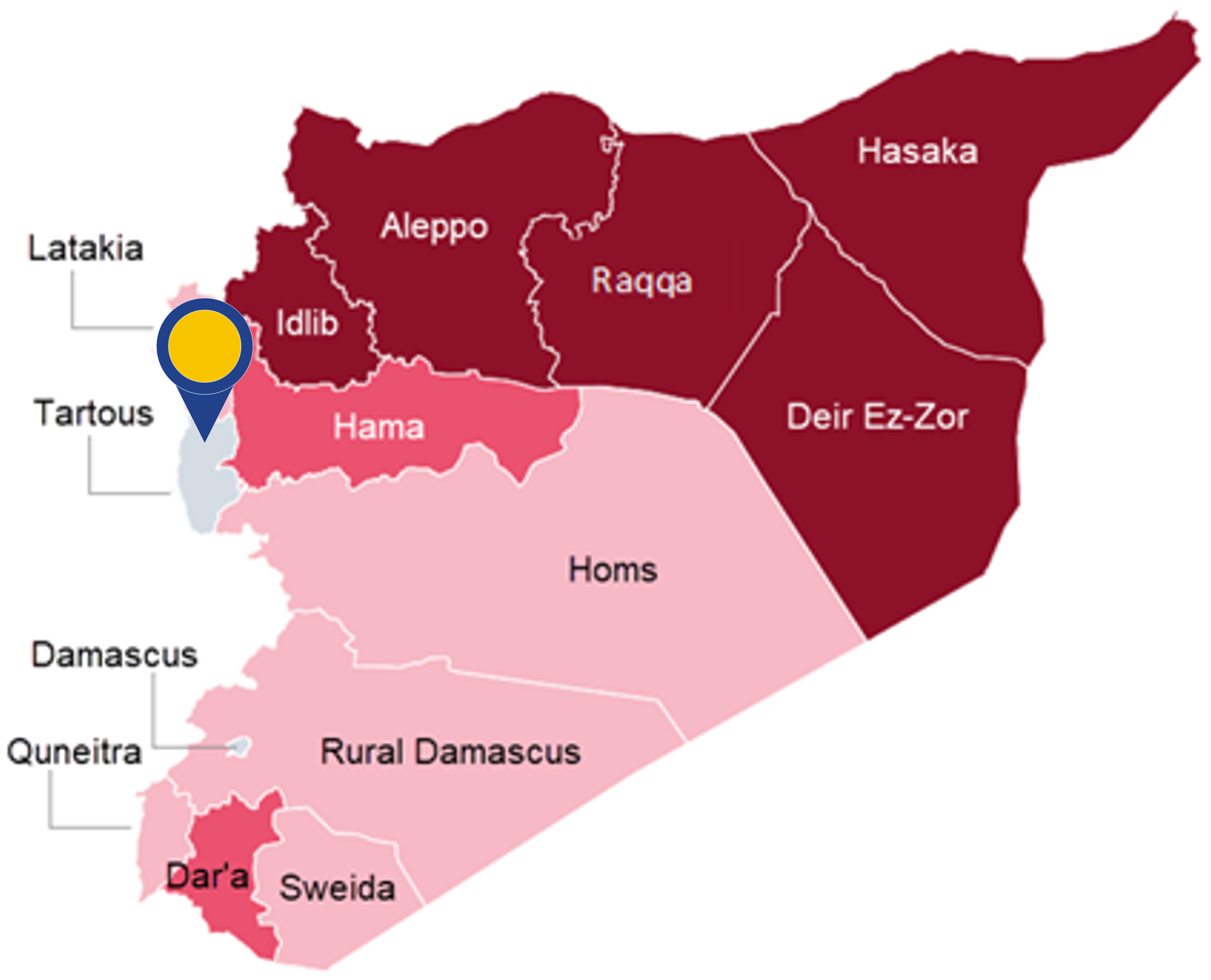[Main COI reference: Security 2021, 2.5]
General information
Tartous and Latakia governorates form the coastal region of Syria. Tartous governorate borders the Mediterranean Sea in the west, Latakia governorate in the north, the governorates of Hama and Homs to the east, and Lebanon to the south. Tartous consists of five administrative districts: Tartous City, Baniyas, Dreikish, Safita and Sheikh Badr. In a March 2021 report, UNOCHA estimated the population of Tartous governorate to be of 929 366 inhabitants.

Background of the conflict
Since the beginning of the conflict in 2011, the governorate of Tartous has largely been controlled by GoS and experienced no major attacks. However, in 2016, the city of Tartous was targeted by ISIL and in 2017, the seaside promenade of the city was hit by several explosions carried out by suicide bombers. In these attacks, two persons, who were believed to belong to GoS forces, were killed. [Security 2020, 2.5]
Actors: control and presence
As of March 2021, Tartous governorate was under GoS control.
Local Defence Force militias presence is reported to be greater in rural areas of Tartous governorate, which may sometimes create security issues with GoS security agencies in rural areas, due to LDF’s potential targeting of individuals and imposition of their own security measures and controls.
The 49 years lease agreement for Russia’s naval base at Tartous allows 11 vessels to dock there, and ‘Russia is currently upgrading’ it ‘to make it more robust as a base’. Russian and Syrian joint military exercises are regularly conducted in the port of Tartous.
It is reported that Iran is behind a demographic engineering plan aimed at establishing its influence in the region, by bringing Shia who fled their homes during the civil conflict to these areas, but also by bringing in others from Lebanon and Iraq.
Reportedly, anti-government armed groups were not present in the governorate of Tartous.
Nature of violence and examples of incidents
In the reporting period, there were no incidents of battles or remote violence in the governorate. Reported incidents concerned death in prison and torture of people held in detention by the GoS security forces. In 2020, no landmine victims were reported in Tartous. Israel reportedly hit an Iranian oil tanker in the port of Baniyas in April 2021, no casualties being recorded.
Incidents: data
ACLED recorded 1 security incident (average of 0.02 security incidents per week) in Tartous governorate in the period from 1 January 2020 to 31 March 2021. The reported incident was coded as ‘violence against civilians’.
Civilian fatalities: data
VDC recorded 3 civilian fatalities in 2020 and no civilian fatalities in the first three months of 2021. SNHR recorded no civilian fatalities in 2020 and in the first three months of 2021. For the full reporting period, this represented less than 1 civilian fatality per 100 000 inhabitants according to VDC data.
Displacement
In 2020, UNOCHA reported for Tartous governorate around 4 000 IDP movements from, including 3 000 within the governorate. 5 000 IDP movements were reported from other governorates to Tartous.
There were no reports of spontaneous IDP return movements to Tartous governorate during the reporting period.
Further impact on civilians
It was assessed that 0.4 % of the population in Tartous governorate was living in damaged buildings.
|
|
Looking at the indicators it can be concluded that in the governorate of Tartous, there is, in general, no real risk for a civilian to be personally affected within the meaning of Article 15(c) QD. |
